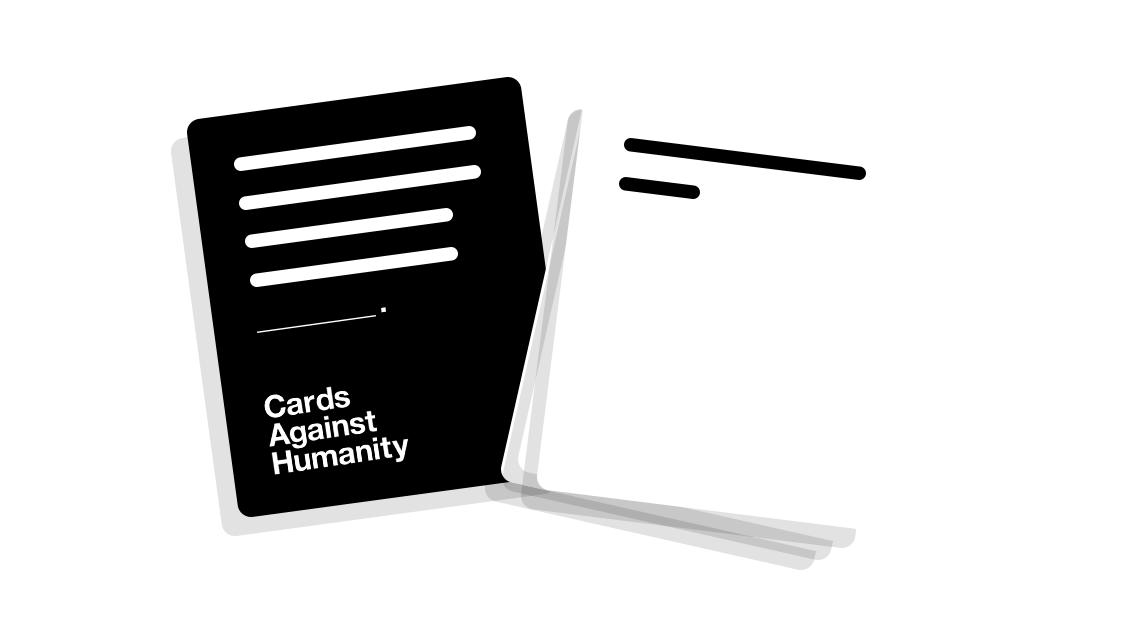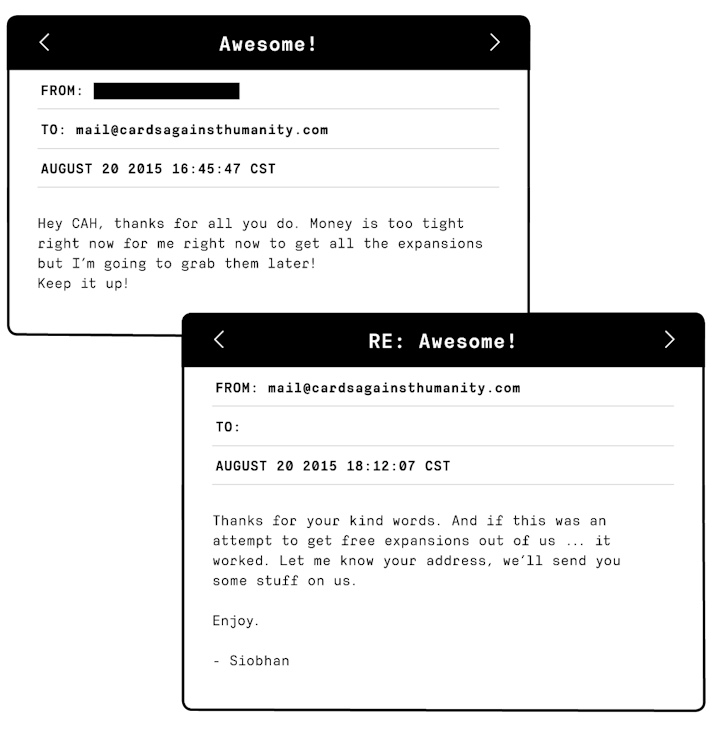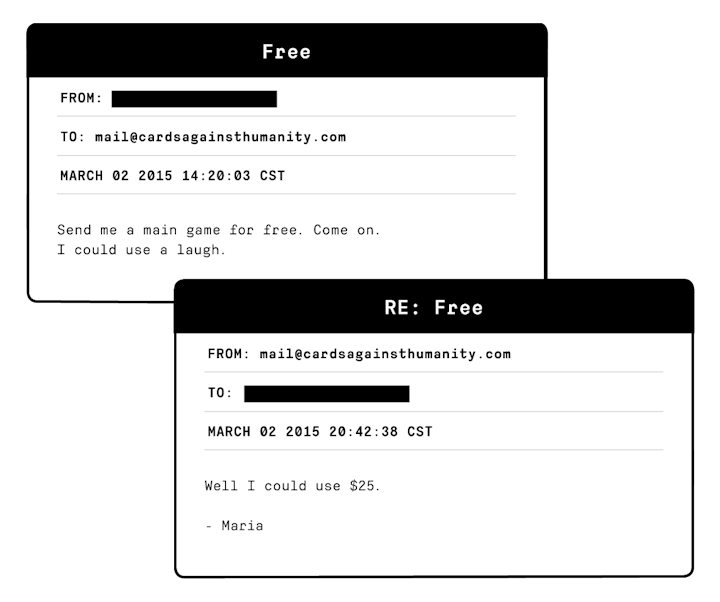Scaling Support With Personality at Cards Against Humanity


People have strong feelings about Cards Against Humanity, the self-described "party game for horrible people." The idea is simple — one player asks a question from a black card, and everyone else fills in the blank with the white card they think is funniest (or often the most shocking/surprising/taboo).
As a company, Cards Against Humanity has earned a reputation for attention-grabbing marketing events, from digging a giant, pointless hole to selling literally nothing for $5, which garner praise and anger in seemingly equal parts.
Recently I heard Cards Against Humanity Co-founder Max Temkin on the Thoroughly Considered podcast talking about the tens of thousands of customer service emails their Black Friday events can generate. I immediately wondered how a small team could manage such high volumes without losing the personality that sets them apart. So I asked them!
Scaling support at Cards Against Humanity
Jenn Bane is Cards Against Humanity’s Director of Community, but she started out spending all her time directly answering customers.
"When I first started at Cards Against Humanity in early 2013, it was my job to answer all the emails in a funny and delightful way. Now we've grown, and I oversee a writing team made up of part-timers and college interns."
There are four full-time customer service team members year-round, and they typically respond to customers within 48 hours. During holiday seasons that team grows to around 10 people working directly in the support inbox. When things go wrong, Bane is able to add more capacity:
"In 2015, one of our warehouses had a meltdown and got delayed, so we brought on even more staff to help. We had something like 5,000 emails a day, every day, that December."
Integrating new staff is a challenge on any team, but adding people during a busy period and asking them to work directly with customers who have such high expectations of the Cards Against Humanity personality and brand is even tougher.
Bane sees support as more than reactive problem-solving. It’s an opportunity for connection: "For us customer service is very much an important part of our brand; it's a direct way to communicate with our fans." She shares two simple rules with every new customer service team member: “Priority #1 is to fix the customer's problem, but priority #2 is to make them laugh - sometimes at their expense, sometimes at ours.”
Onboarding for customer service on the Cards Against Humanity team covers the usual tools and systems, but it extends all the way to better joke writing. Bane explains:
"When we bring a new customer service person onto the team, we hold a few writing workshops. We show some old emails and how we answered them, or how we could have answered them better or sharpened up a joke.
"So we're not only teaching new folks how our systems and customer service policies work, we're also teaching them how to write in-voice."
Sample emails for Cards Against Humanity customer service training
Here are a few examples Bane uses to teach her new team members the right mix of helpfulness and humor. Combined with individual reviews, it helps them dial in the company voice quickly, which is vitally important during a busy holiday period.



5 Lessons from the Cards Against Humanity support team
Your company may not sell boxes of actual...poop, but there are useful lessons to be drawn from a small team supporting a large and highly engaged customer base in a very seasonal business. Here are five ways to follow the Cards Against Humanity model.
Know your business rhythms
Understand when support demand is likely to spike, so you can ramp up your capacity in advance with time to properly onboard staff.
Consider a flexible team size
It would be easy for Cards Against Humanity to rely on their very casual brand to brazen their way through slow response times, but instead they grow their team to serve customers more quickly when they need to.
Maintain your company voice
How does your company speak to your customers? Is it consistent all the way from your advertising through sales and into service? Create a voice and tone guide to make it easier for your team to deliver great service that sounds like it all comes from the same place.
Create training resources
Don’t wait until your support team is drowning to start building support onboarding materials. As you come across excellent answers, flag them and build up a library of sample emails, chat logs or recordings that new members can use to model their work.
Support is more than problem-solving
Does your support team treat customers as fans? How would that change their day-to-day approach to customer communication?
Customer service teams have an incredible responsibility to be a human face associated with your company. Even when queues are long and the team is busy, if they are well supported, they can create truly personal experiences with your customers.
